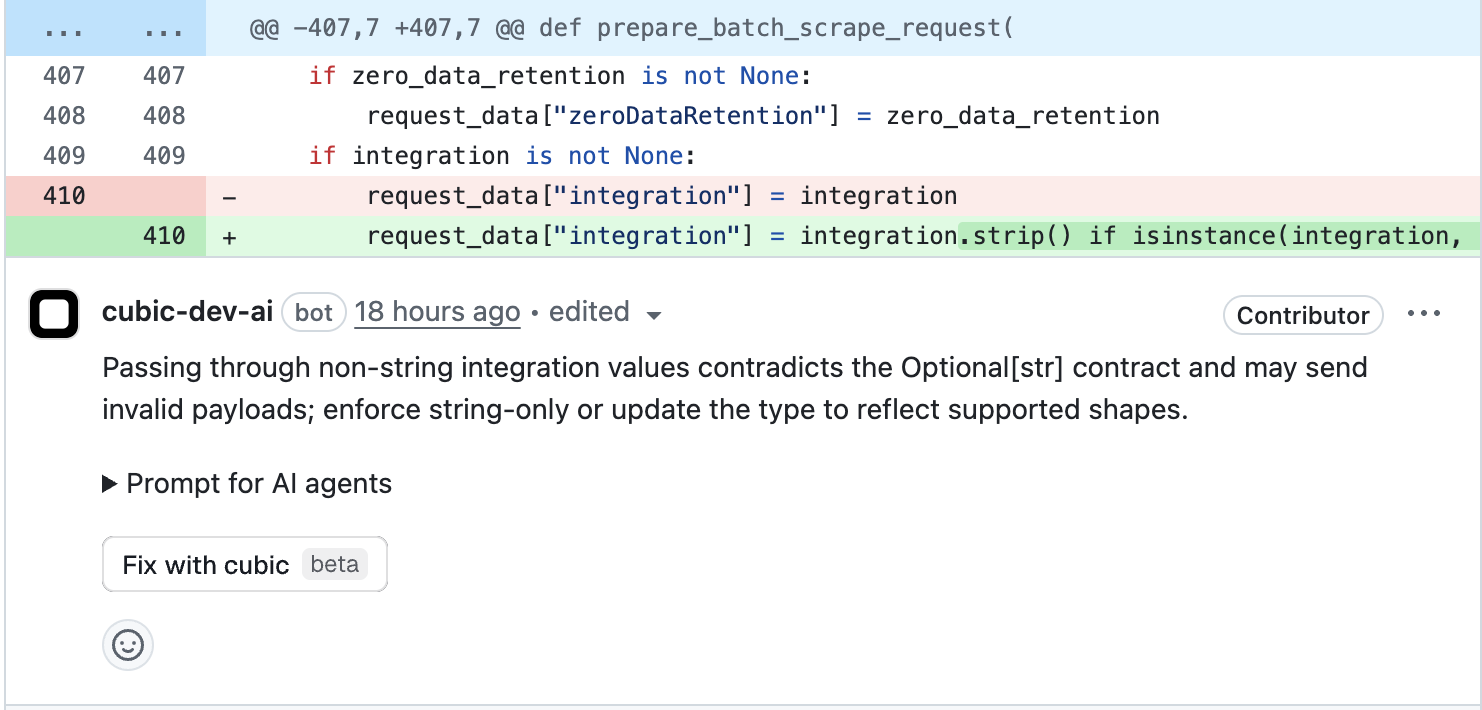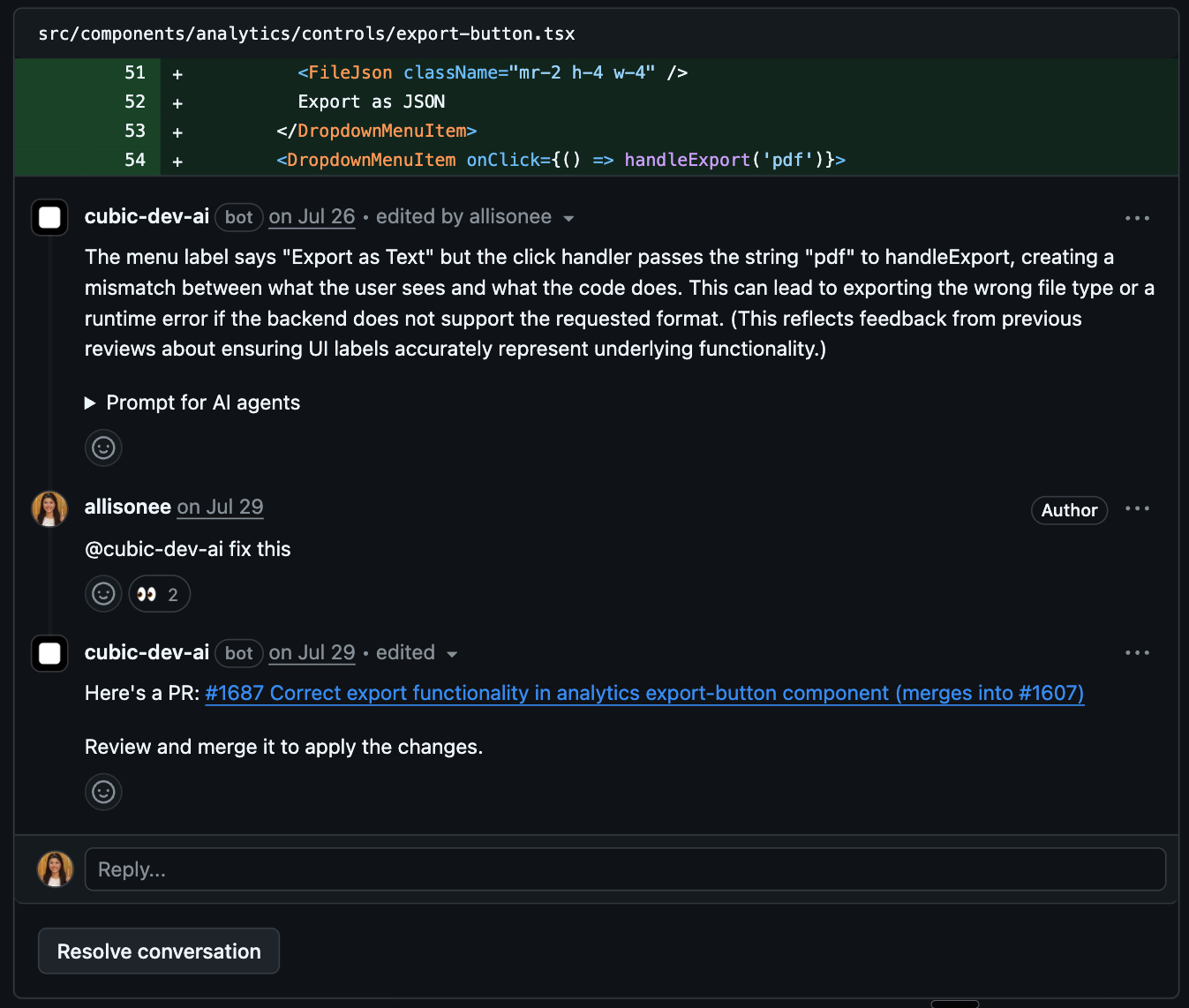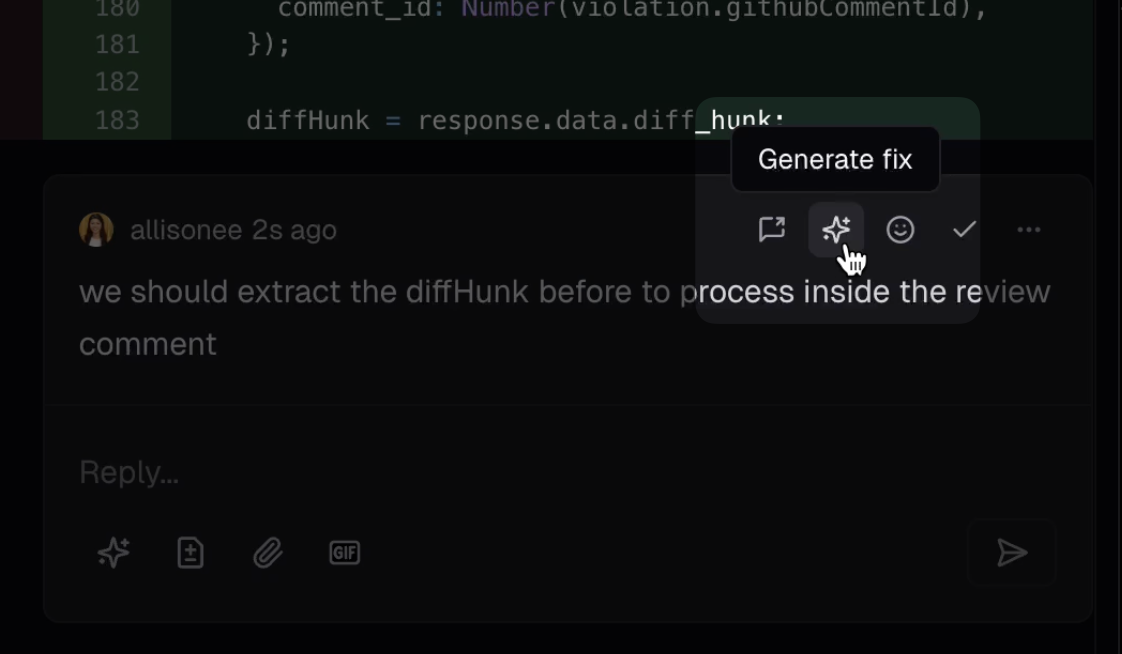
How it works
When cubic identifies an issue in your code, you can request an AI-generated fix that:- Analyzes the issue - Reviews the problem and relevant context
- Generates a solution - Creates a targeted fix addressing the specific issue
- Opens a fix PR - Automatically creates a new pull request targeting your original PR’s branch
- Preserves review flow - Allows you to review the fix separately before merging into your main PR
Fix PRs target the branch of your original PR, not the main branch. This lets you review and test
the fix in isolation before incorporating it into your work.
Triggering fixes
There are two ways to request an AI fix:Tagging cubic in Github or cubic

- “@cubic-dev-ai fix this issue”
- “@cubic-dev-ai can you generate a fix for this?”
- “@cubic-dev-ai please fix the type error mentioned above”
Using the fix button in cubic

- The comment identifies a specific issue in a file
- The comment includes file and line context
- Your installation has the fix feature enabled
What to expect
Fix generation process
- Acknowledgment - cubic reacts with 👀 and comments
- Analysis - The AI analyzes the issue and surrounding code
- PR creation - A new pull request is opened with the proposed fix. We use Claude Code in the background. (typically 1-3 minutes)
- Notification - cubic updates the original comment with a link to the fix PR
Reviewing fix PRs
Fix PRs include:- Descriptive title - AI-generated title explaining what’s being fixed
- Targeted changes - Only the code needed to address the specific issue
- Original context - Reference to the original PR and issue comment
- Clean diff - Easy to review changes in isolation
Since fix PRs target your feature branch, you can test the changes locally by checking out the fix
branch before merging.
Best practices
Tips for using AI fixes
- Review carefully - Always review AI-generated code before merging
- Test locally - Verify the fix works as expected in your environment
Limitations
- Complex architectural changes may require manual intervention
- Fixes are scoped to the specific issue identified
- Some issues may require broader refactoring beyond a single fix
- Follow-up changes are not yet supported
- Generated PRs run through your existing GitHub CI checks
Integration with your workflow
Fix PRs integrate seamlessly with your existing review process:- Review the fix PR independently
- Merge when satisfied into your feature branch
- Continue with your original PR now including the fix
- Single deployment - Everything ships together